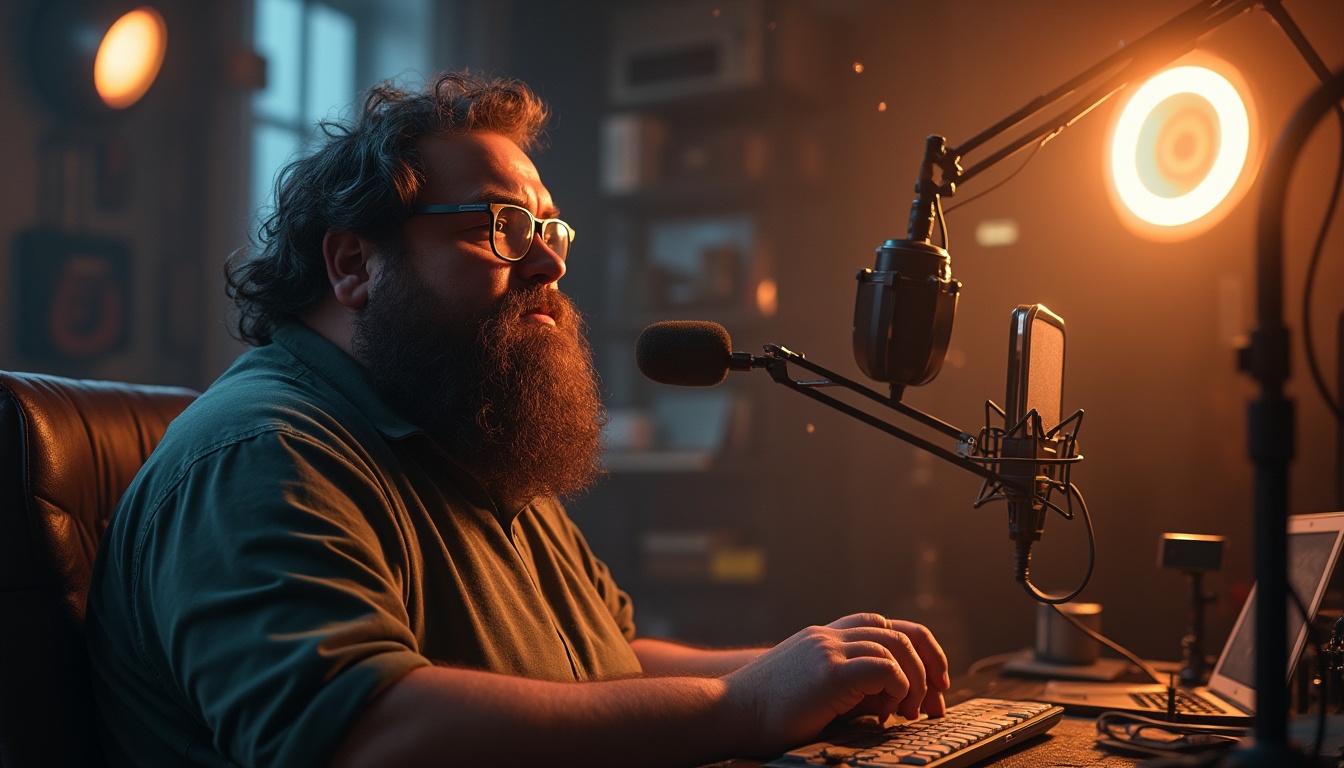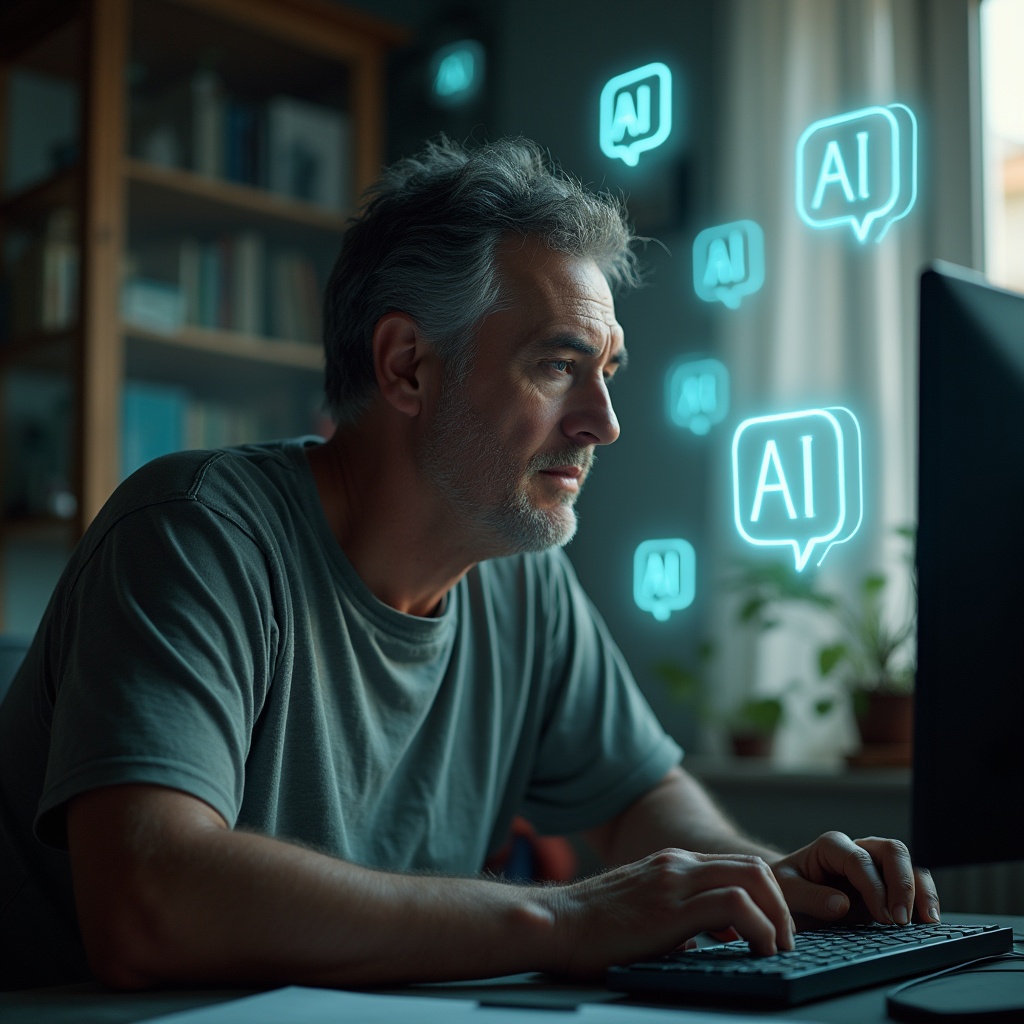Let me level with you: the first YouTube video I ever shot, I spent more time worrying about whether my shirt was wrinkled than about making sure I was actually looking at the camera. And when I finally uploaded it—well, someone in the comments pointed out (not-so-gently) that it looked like I was hosting a staring contest with my own reflection. Did it sting? Sure. But it taught me more than any "Top 10 YouTube Tips" post ever could. In this post, I’m skipping the generic advice and, instead, sharing the kind of cringe-worthy (and totally fixable) mistakes that actually sabotage YouTube channels, and how real creators can break the cycle.
Staring at the Wrong Screen: Why Eye Contact Isn’t Just for Dates
Let me ask you something: would you keep watching a YouTube video if the creator never looked at you? If I spent the whole time glancing at my notes, the preview screen, or just off to the side, chances are you’d click away pretty quickly. This is one of the most common—and overlooked—YouTube Video mistakes, and it can seriously hurt your YouTube Engagement.
So, why does eye contact matter so much in Video Production? It’s not just about looking professional. When you look directly into the camera lens, you’re actually looking directly into the viewer’s eyes.
“When you look directly into the camera lens, you’re actually looking directly into the viewer’s eyes, and that creates what psychologists call a parasocial relationship.”This means viewers feel like you’re having a personal conversation with them, not just talking at them. That sense of connection is powerful. It’s what makes people trust you, listen longer, and come back for more.
Research shows that direct eye contact can boost your YouTube Engagement in measurable ways. For example, one study found that videos where creators maintain steady lens focus see a 37% higher average view duration compared to videos where the creator’s gaze wanders. That’s a huge difference. It means people are sticking around, absorbing your message, and engaging with your content—all key factors for YouTube Growth Tips and algorithm success.
But it’s not just about what happens during your video. Thumbnails matter too. If your thumbnail shows you making eye contact, you can see up to a 40% higher click-through rate (CTR). That’s right—just the simple act of looking at your audience, even in a still image, can make your video stand out and get more clicks. In a crowded field, these small details can make a big difference.
Of course, nobody’s perfect. Even experienced creators sometimes catch themselves glancing at the preview screen or getting distracted by their notes. It’s a habit that’s hard to break, especially when you’re trying to make sure you’re in focus or checking your framing. I’ve been there myself. The first few times you try to maintain eye contact with the lens, you’ll probably slip up. That’s totally normal.
Thankfully, there are tools to help. If you film an entire video and realize afterward that you were staring at the wrong spot, don’t panic. Veed.io offers an AI-based eye contact correction tool. Just upload your file, and it can adjust your gaze so it looks like you were looking at the viewer all along. It’s not a substitute for practice, but it’s a lifesaver when mistakes happen.
Building credibility as a creator is all about making your audience feel personally addressed. Direct eye contact is one of the simplest, most effective YouTube Growth Tips out there. It mimics real conversation, builds trust, and keeps people watching. If you want to improve your Video Production and boost your YouTube Engagement, start by looking your viewers in the eye—through the lens.
Mismatch Branding (a.k.a. The Messy Bedroom Paradox)
Let’s talk about something almost nobody warns you about when it comes to credibility building on YouTube: mismatch branding. I call it the Messy Bedroom Paradox. Imagine you click on a YouTube video promising to teach you how to invest $100,000 in real estate. But the creator is sitting in a cluttered bedroom, wearing a wrinkled t-shirt, and the lighting is so bad you can barely see their face. Would you trust them with your money? I know I wouldn’t—and I bet you wouldn’t either.
Here’s the thing: viewers make snap judgments. Research shows that people form an opinion about your credibility in as little as 50 milliseconds. That’s before you even say a word. And get this—94% of first impressions are based entirely on visual presentation. Your background, your lighting, even what you wear, all matter more than you might think. This is why video production isn’t just about what you say, but how you present it.
But it goes deeper than just visuals. Your setup, your appearance, and your background should all match the value you claim to deliver. If you’re teaching thumbnail design, but your own thumbnail looks amateurish, people will click away. If you promise expert advice but your video looks and sounds like it was filmed in a rush, your audience won’t stick around. It’s all about brand congruence—making sure your visual and audio presentation aligns with your message.
Let’s not forget audio quality. You might think viewers care more about stunning visuals, but the data says otherwise. YouTube’s own research found that eighty four percent of viewers prefer good audio with average visuals over great visuals with bad audio. I’ve seen this over and over. No matter how fancy your camera is, if your audio sounds like you’re talking through a drive-thru speaker, people will leave. In fact, studies indicate that videos with clear, professional audio can increase viewer attention by up to 35% compared to those with poor sound.
- Snap judgments: Viewers assess your credibility within 50 milliseconds—visuals often matter more than what you say.
- First impressions: 94% are based on visual presentation: background, lighting, even what you wear.
- Poor audio is worse than bad video: 84% of viewers prefer decent visuals and good sound over stunning 4K with scratchy audio.
- Easy fixes: Amazon microphones, Veed.io audio cleanups, and a little effort go a long way.
The good news? Fixing these issues is easier than you think. You don’t need a Hollywood studio. A simple microphone upgrade from Amazon, a quick background tidy, or using tools like Veed.io to clean up your audio can make a massive difference. These small tweaks can instantly boost your video production quality and help you avoid the messy bedroom paradox.
YouTube's own research found that eighty four percent of viewers prefer good audio with average visuals over great visuals with bad audio.
So, before you hit record, take a moment to check your setup. Does your background reinforce your message? Is your lighting clear and flattering? And most importantly, does your audio sound crisp and professional? These details are the foundation of credibility building on YouTube, and they’re often the difference between a viewer clicking away or subscribing for more.

Taming the Trolls (and Other Post-Upload Pitfalls)
If you’re a YouTube creator, you’ve probably heard plenty about thumbnails, titles, and algorithms. But there’s a whole other side to running a YouTube channel that nobody really talks about: what happens after you hit “publish.” It’s not just about the content you create, but how you handle what comes next—especially when it comes to negative feedback. And trust me, this is where real Engagement Strategies and Channel Strategy come into play.
Let’s get real: hateful comments are a problem. A recent survey found that 44% of YouTubers have taken breaks specifically because of negative or hateful comments. That’s nearly half of all creators! I remember when I first started my own channel. I was uploading videos almost every day, excited and a little nervous. Then one day, someone left a comment saying my accent was annoying. It sounds trivial, but that comment stuck with me for days. I obsessed over it, replaying it in my head, and it started to affect my motivation to keep creating. If you’ve ever felt the same, you’re not alone.
But here’s what I’ve learned—and what research shows successful YouTube creators do differently. They treat comments like a business decision, not a personal attack. It’s not about growing a thicker skin, but about setting healthy boundaries. Emotional boundaries are an underrated skill in the world of YouTube Growth Tips. Sam Sheffer, a well-known tech vlogger, spent years learning to emotionally distance himself from negative feedback. It’s not easy, but it’s essential if you want to maintain your mental wellness and creative consistency.
So, how do you actually do this? Here are some practical Engagement Strategies I use for my own YouTube channel:
- Use YouTube’s blocked words list: You can set up a list of words or phrases that you don’t want to see in your comments. This filters out a lot of negativity before it ever reaches you.
- Limit your time reading comments: I know it’s tempting to scroll through every comment, but I try to avoid it. Instead, I focus on the analytics that matter—like click-through rate (CTR), watch time, and revenue. These are the metrics that actually help you grow.
- Remember the silent majority: For every negative comment, there are dozens—maybe hundreds—of viewers who enjoy your content but never say a word. “Please don't let that one voice drown out the silent majority and make it impact you in a negative way.” This mindset shift is crucial for any Channel Strategy.
Studies indicate that handling negative comments constructively not only protects your mental health but also ensures you keep showing up for your audience. The YouTube algorithm rewards consistency, and taking breaks due to trolling can disrupt your growth. That’s why focusing on actionable data—like improving your CTR or increasing watch time—is far more beneficial than chasing validation in the comments section.
At the end of the day, building a successful YouTube channel isn’t just about what you post. It’s about how you protect your creativity and mental space after you post. Set boundaries, use the tools available, and remember: analytics are your friend, opinions are just noise.
Copy-Paste Catastrophes: The Trap of Mimicking, Not Modeling
Let’s be honest—if you’re reading this, you’ve probably watched dozens of videos and read countless articles about YouTube mistakes, YouTube Algorithm secrets, or the “ultimate” Channel Strategy. Maybe you’ve even joined a few masterminds or grabbed some free courses. But here’s the truth that almost nobody talks about: chasing after viral formulas or copying what big creators do rarely leads to real YouTube Success. Audiences are hungry for unique perspectives, not recycled content.
I’ve seen this firsthand. Early in my journey, I thought there might be a hidden hack—some secret YouTube Growth Tip that would skyrocket my channel overnight. But after years of trial, error, and a lot of rough first videos (trust me, they weren’t pretty), I realized that progress, not perfection or imitation, is what drives long-term growth. Even the biggest creators started with awkward, low-quality videos. The difference? They kept learning, kept improving, and—most importantly—kept their content original.
Let me share a quick story. I once published a video titled “Forget Canva and Photoshop: This AI Thumbnail Maker Does It All.” It went viral, reaching over 3.7 million potential viewers in the YouTube growth niche. What happened next? Dozens of creators rushed to make the exact same video, with the same title and thumbnail. But here’s the catch: most of those copycat videos flopped. Why? Because viewers had already seen my version, or they simply weren’t interested in watching the same thing twice. The YouTube Algorithm isn’t designed to reward duplicates—it’s built to surface videos that keep viewers genuinely engaged.
Research shows that developing a “sticky” channel strategy is what really sets successful creators apart. This means building a channel where 80% of your audience is excited for your next upload, not just chasing whatever trend is hot this week. It’s about crafting your own video recipe—a blend of your personality, production style, and the unique value you bring. As I like to say,
I am modeling after what works. However, I’m trying to find unique angles that nobody has covered just yet.
When you analyze breakout creators, you’ll notice a pattern. They don’t just copy titles and thumbnails; they study why certain formats work, then adapt those principles to fit their own style and audience. This is the heart of effective Content Creation. The algorithm favors novelty and engagement, not imitation. If you want to build real viewer loyalty, you need to offer something different—something only you can provide.
So, if you’re tempted to mimic the latest viral trend or copy a big creator’s formula, pause for a moment. Ask yourself: what’s my unique angle? How can I serve my audience in a way nobody else does? That’s the real secret to YouTube Success. Not hacks, not shortcuts—just authentic, consistent, and creative work that stands out in a crowded feed.
TL;DR: Forget magic hacks. Real YouTube growth is all about honest connection, smart branding, and learning from actual missteps—yours and others'. Make eye contact, prioritize quality (especially audio!), ignore the trolls, and focus on standing out, not fitting in.
A big shoutout to Youri van Hofwegen for their insightful content! You can check it out here: [https://www.youtube.com/watch?v=utw62fK0FWM](https://www.youtube.com/watch?v=utw62fK0FWM).



